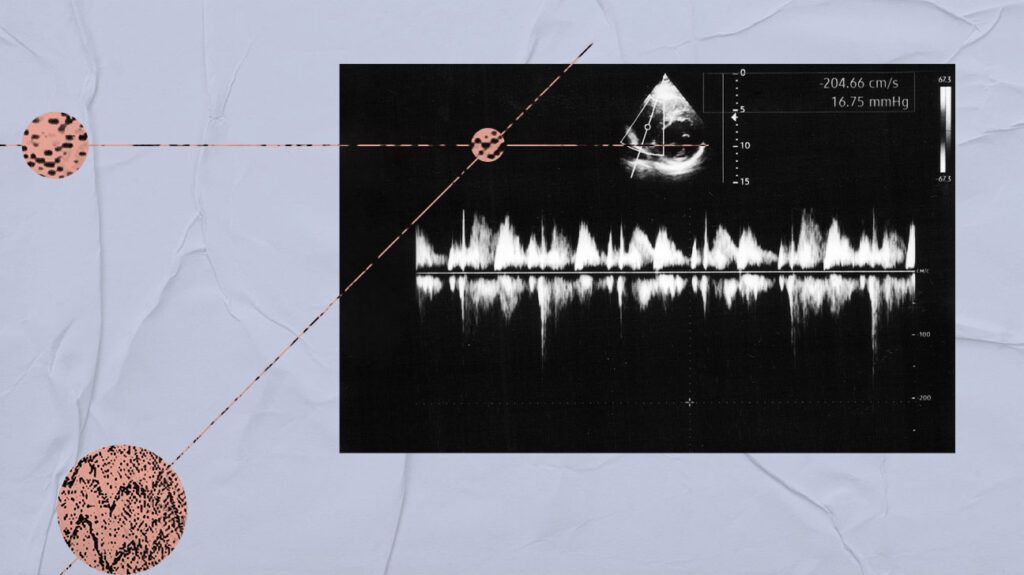There are three types of bicuspid aortic valves — types 0, 1, and 2. Experts classify these types based on whether the leaflets of the valve have fused to form a ridge.
A bicuspid aortic valve is a congenital — present from birth — abnormality of the aortic valve in the heart.
The aortic valve separates the left ventricle, the lower left chamber of the heart, and the aorta, the main artery connecting to the heart.
Usually, the aortic valve has three leaflets, which open to allow blood to flow out of the heart and prevent blood from flowing back in. With a bicuspid aortic valve, people are born with only two leaflets instead of the usual three.
This article looks at the bicuspid aortic valve types, as well as their diagnosis, treatment, complications, and outlook.

According to a 2020 article, doctors may classify bicuspid aortic valves into three different types, based on the Sievers classification system:
- Type 0 valves: This type has two leaflets which are usually symmetrical.
- Type 1 valves: This type has one raphe, a ridge, where two underdeveloped leaflets have fused.
- Type 2 valves: This type has two raphes, or ridges.
Doctors may also use further subclassification to describe the fusion of the leaflets and how the valves function.
Type 1 is most common, occurring in around 90% of people with a bicuspid aortic valve.
These classifications may help doctors assess the level of surgical risk when treating bicuspid aortic valves.
Doctors may use transthoracic echocardiography to assess the heart valve in people with a bicuspid aortic valve.
Transthoracic echocardiography is an imaging test that uses ultrasound to view the heart and assess function.
Using transthoracic echocardiography that can create 3D images may be effective for identifying raphes, their locations, and the type of bicuspid aortic valve.
During the echocardiogram, doctors may use a color Doppler, an imaging test that uses ultrasound to show how blood is flowing through blood vessels.
Doctors
Bicuspid aortic valves
Possible complications of a bicuspid aortic valve may include:
- Aortic stenosis: Narrowing of the aortic valve reduces blood flow from the left ventricle to the aorta.
- Aortic regurgitation: The aortic valve does not close properly, allowing blood to flow back into the left ventricle.
- Infective endocarditis: This is inflammation of the heart valves and lining of the heart.
A bicuspid aortic valve may also link to:
- Coarctation of the aorta: A narrowing of the aorta.
- Ascending aortic dilatation: An enlargement of the aorta.
- Aortic aneurysm: A bulge in the aorta.
Without treatment, these conditions may be life threatening, as they may cause the aorta to rupture.
Without treatment, these conditions can also result in heart failure due to a weakening of the heart tissue, which prevents the heart from pumping blood adequately.
If a person’s bicuspid aortic valve is functioning well, they
People may need surgery if they experience symptoms or have poor heart function. For people under the age of 18, the standard surgery is valvuloplasty.
During a valvuloplasty, a surgeon will guide a catheter through the blood vessels to the heart and use a balloon to widen the valve.
According to the research, around 30% of people with bicuspid aortic valve may require aortic surgery or aortic valve replacement.
With surgical aortic valve replacement (SAVR), a surgeon will make an incision into the chest to remove and replace the faulty aortic valve with a new valve.
If surgery is too high risk for some people, they may have a transcatheter aortic valve replacement (TAVR).
TAVR involves replacing the aortic valve with a new valve, but it uses a small incision in another area of the body instead of open-heart surgery.
A surgeon will guide a catheter through the blood vessels to reach the heart to place a replacement valve within the old valve.
According to a 2020 article, around 25% of people with a bicuspid aortic valve will need aortic valve surgery.
Approximately
Over a 20-year follow-up period, 5% of people may need ascending aortic surgery. This involves placing a graft into the aorta to prevent complications.
Throughout a person’s lifetime, the bicuspid aortic valve will generally degenerate.
People may require surgical procedures, such as SAVR or TAVR, to treat complications, such as aortic stenosis.
This section answers some frequently asked questions about bicuspid aortic valves.
Do all bicuspid aortic valve types need surgery?
Surgery for bicuspid aortic valve types
If a bicuspid aortic valve is functioning well, a doctor will monitor the condition and check for any changes to the aorta or heart function.
What is the difference between TAVR and SAVR in bicuspid aortic valves?
SAVR is a key treatment for bicuspid aortic valves and involves open-heart surgery to replace the aortic valve.
TAVR is an alternative procedure for people who are at a higher risk. A surgeon will make a small incision in another part of the body and guide a catheter to the heart to insert a replacement valve.
What are the odds of passing on a bicuspid aortic valve?
According to 2023 research, around
Medical professionals classify bicuspid aortic valve types depending on the presence of raphes — ridges — and the fusion of leaflets. Classifying bicuspid aortic valves may help doctors make treatment decisions.
Some people may require monitoring for their bicuspid aortic valve, while others may require surgery to widen the valve or replace the aortic valve with a new one.
